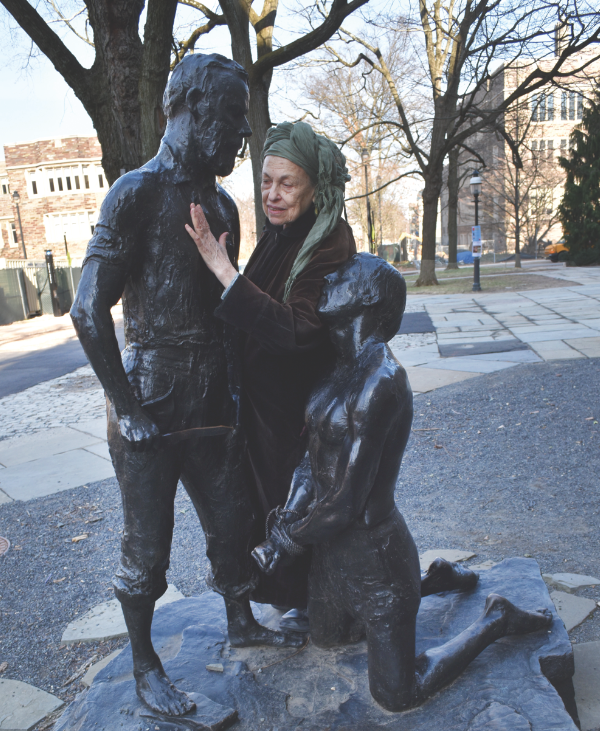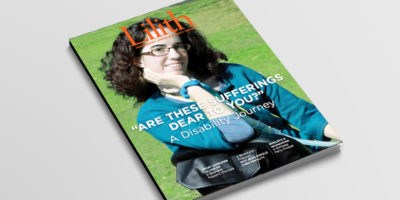
Teaching Gunhate
An artist’s manifesto for protecting her grandsons.
 I’ve noticed that as soon as a precious newborn baby boy is old enough to play games — maybe when he’s two or three — he might pick up a fork or a stick and point it at anyone (even his own grandma) and say “Bang-Bang you’re dead!”
I’ve noticed that as soon as a precious newborn baby boy is old enough to play games — maybe when he’s two or three — he might pick up a fork or a stick and point it at anyone (even his own grandma) and say “Bang-Bang you’re dead!”
So when my little grandson was excitedly tearing at the gift-wrapped present at his four-year-old birthday party and, lo and behold, there was his first gift — a shiny “toy” gun that, damn it, looked just like a real gun — I let out a shriek.
The noisy merriment became stone silence.
Mazal Tov. I sure got their attention. I then held my nose, like the gun was smelly, and retched like I was about to throw up. I didn’t care if the giver of this gift (who happened to be his well-meaning babysitter) was insulted; I’d beg for her forgiveness later, but now was the crucial time to make my point.
Well, get this: The next time I visited, that little angel said, “Nana, I hid the gun in my drawer so you won’t see it, because you don’t like guns.”
“Oh, what a good idea you had, Honey. And you’re right; Nana hates guns. And so do a lot of people.”
The kids catch on. When my first grandbaby lived near Central Park, I’d wheel him humming happily until we would pass a statue of some pompous general with a rifle or some “patriotic” soldier with a gun. One Sunday, as we passed the statue of the Pilgrim Fathers, I blurted out this question: Where are the Pilgrim Mommies? This brought an anxious frown to the darling’s sweet face like he was about to cry. “Besides,” I continued, “The Pilgrim fathers are wearing high socks. So who washed their socks if the mommies weren’t there?”
(Reader, if you think a toddler is too young to hear these laments, remember that Superman could get to their pure minds first.)
When we walked out of the park on 71st Street and Fifth Avenue, there was a big statue of four soldiers about to collapse. I said, “Look, Sweetie. They’re all dirty and they’re falling down. They must have been fighting in the mud. What should they
do now?”
(Reader, do you want to hear the brilliant answer from a two year old?)
I swear it is true — on video if you need proof — this cutie pie said what we all said: “They should go home!!”
Fast forward to another statue that I was compelled to point out to my teenage grandson, a statue in Princeton made by the late sculptor George Segal. Kent State had commissioned the work by Segal to honor the three Kent State students shot in the Civil Rights protests. However, after Segal completed the work, Kent State rejected it. It has been titled “Abraham and Isaac,” alluding to elders (such as the biblical Abraham) who would send the young (his own son, Isaac) to be killed because a god (like a president) suggested this sacrifice as a sign of loyalty (patriotism).
Princeton University took this work after Kent State rejected it.
I asked my grandson to take a photo of me with the work. Then I mounted the pedestal and stood between Abraham’s knife and Isaac. I put my arms around poor Isaac. Luckily, the Princeton students walking by did not pay any attention to this old lady on a pedestal as they scurried to their classes. But my teenager knew where I stood. He also knew where I would stand if he would be called by the draft.
Helène Aylon is a visual, conceptual, installation performance artist and eco-feminist whose art has often focused on “rescuing.” Her memoir, Whatever Is Contained Must Be Released: My Jewish Orthodox Girlhood, My Life as a Feminist Artist was published by the Feminist Press in 2012.


